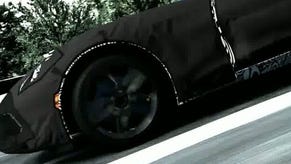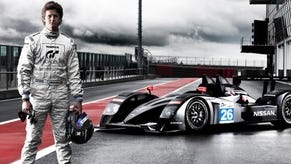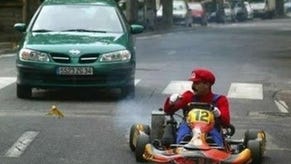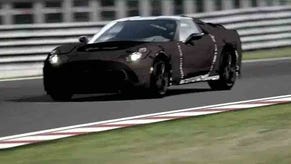Gran Turismo 5
Slow and steady.
The day before yesterday, everybody in the games industry convinced themselves that Lady Gaga was going to turn up at Activision's E3 party, and she didn't. Yesterday, everybody in the games industry convinced themselves that David Jaffe wasn't going to unveil a new Twisted Metal, and he did.
In the midst of so much speculation and confusion, it's comforting to know that some things don't change: another E3, another chance to get a look at Gran Turismo 5, Polyphony Digital's personal Arcades Project. It's spent the last half-decade or so growing and growing with no end in sight - a game we get to visit once a year in carefully controlled circumstances, as if we're making an annual visit to an uncle who's stuck in prison.
Finally, though, the end is in sight. Gran Turismo will be hitting the US in November, and the rest of the world will probably be fairly close behind. Even Australia. "It would take too long to explain everything regarding GT5," laughs Kazunori Yamauchi, showing off the game backstage at Sony's booth. He should know: it's taken him long enough to make it.
On the track, Gran Turismo 5 is a dream to drive: the cars have distinct personalities, the skyboxes are huge and dramatic, and the handling can take in anything from arcade racing to simulation stuff so exacting I struggle to travel in a straight line. Today's not about getting another demo, however - there have already been enough of these, along with the little matter of a Prologue to get players accustomed to the basics. No, today Yamauchi wants to explain a bit about just what he's been making all these years, starting, as ever, with the cars.
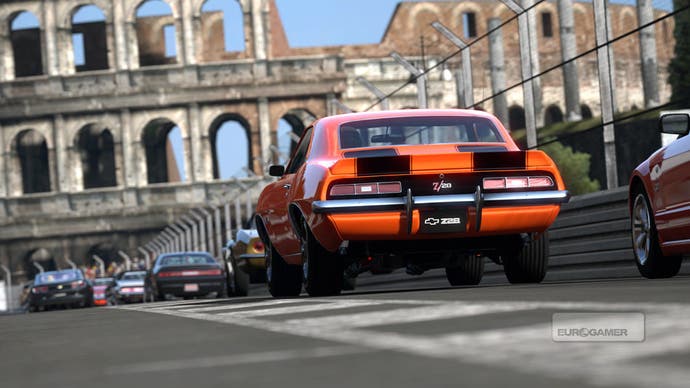
There are two types of car in Gran Turismo, apparently: premium cars and standard cars. The latter, it's worth noting, are only standard by Yamauchi's exacting principles: there's over 800 of them, they cover the majority of the vehicles included in all the previous Gran Turismo games, including the PSP version, and they've been optimised and upscaled for the PS3.
If that bothers you, a show reel of standard cars - Dodge muscle numbers, streamlined F1 concepts, and something that looks to my untrained eye like a Mini Clubman with way too many rallying headlights - hardly makes them seem shabby. They're glossy, finely detailed, and a fair match for anything you might have seen in Project Gotham or Forza.
The 200 premium cars that take the final count past the 1000 mark are something else, however. The premiums have been lavished with a slightly worrying amount of detail - every single screw is visible in the hubs, the interiors have been recreated down to the stitching (standard cars won't have interiors, which is a bit sad, but there are, like, 800 of them), and their undersides have been comprehensively modelled to take into account a new physics system which, along with allowing for dents and scratches, can sends your ride flipping through the air during collisions.
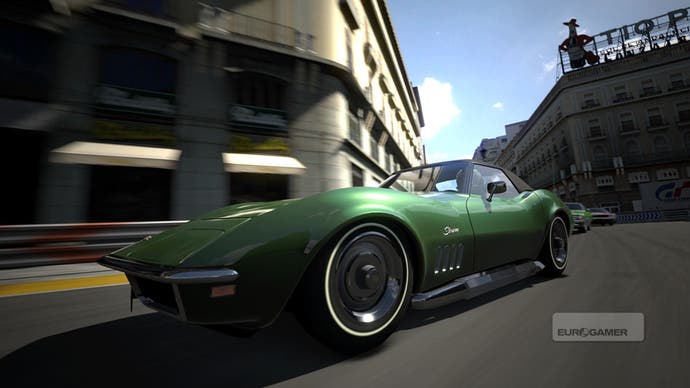
Yamauchi likes to move in close on the models to let people see the individual pieces of disk brakes, or the engine parts dimly visible through grills, and when he compares pictures of a genuine and GT5 Nissan GTR, the only way you can tell the difference is that one of them has the reflection of the man taking the picture in the window. (Yep, I think that's Yamauchi too.)
Included in the premium garage will be nine NASCAR models, including those used by superstars - in Middle America, at any rate - like Carl Edwards and Brian Vickers. Brian Vickers! I know. GT5 allows you to race by the NASCAR rules, as well. Seeing it in motion seems a bit too brutal to fit comfortably into the rest of the game, but it's an excellent opportunity to enjoy that new physics deformation system and some truly epic crashes - although, typically, even fender benders look rather pretty and artful in Yamauchi's universe.
Polyphony hasn't just been modelling cars, of course, and it's here that, if you take into account the team's obsessive talent for minutiae, you start to realise why the game has been in the oven for a while. GT5's tracks - the latest inclusions include Madrid City, Tuscany, Rome Circuit, the Nurburgring and the good old Top Gear Test Track - can take as long as two and a half years to piece together. Once again, that dedication pays off, and whether it's the dusty dirt track of Tuscany to the heavily graffiti'd road surface of the Nurburgring, Polyphony's brought its locations into the game in a way that's vivid, solid, and extremely pretty.




